Camarinas and Muxia 43 06N 9 13W

Gryphon II
Chris and Lorraine Marchant
Tue 4 Aug 2009 17:12
|
Camarinas and Muxia
We arrived at Camarinas late, being careful to avoid the
rocks that, as usual, create a trap for the unwary; in this case they have
a suitable name "Cabo Villano". However we had perfect weather as you can
see and beat most of the way in light winds, only having to motor for the last
few miles. The anchorage is outside the harbour where there are moorings for
fishing boats and a very small marina for local boats with a visitors' pontoon.
We went as far up the Ria as depth would allow and anchored in gently lapping
waters with green sloping hillsides and tiny beaches here and there. The
following morning, we awoke to howling in the rigging from increasing wind and
there was heavy cloud cover. At about 10 a.m. our anchor decided to start to
drag so we quickly moved to a more sheltered location. The second of these 2
photos is supposed to make you feel sorry for us. The wind was gusting to 30
knots and it was pouring with rain.
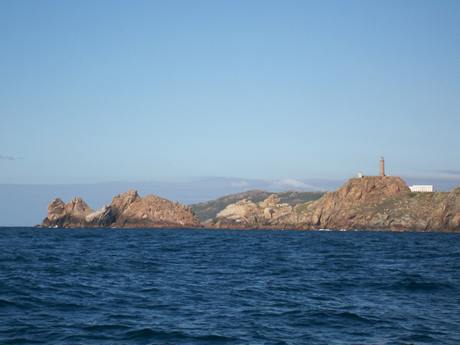 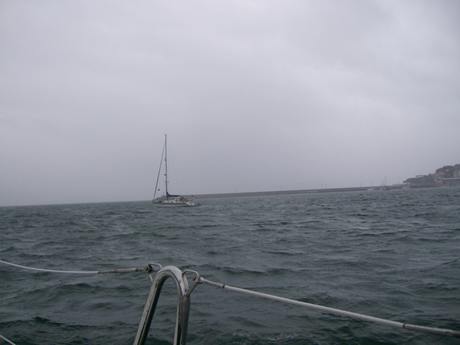 However, the wind gradually dropped and by the evening we
were able to go ashore. An important activity here is lace making, it is used to
make fancy collars, to trim tablecloths and napkins, antimacassars, trimming for
fans. The women work at it in a sort of artisans co-operative clack
clacking away with their bobbins.
Next morning we were able to go over to Muxia where we
anchored in the harbour. That is us in the middle of the harbour below. We had
hoped to go into the new part of the harbour on the right but a small boat waved
us away. About half an hour later there was a strange garrumph noise though the
boat....they had detonated some underwater explosives to remove a rock in the
way of the new marina they are building here. The village itself was
attractive and particularly in this wonderful situation with the open
foaming Atlantic on one side and the calm lake-like ria on the
other.
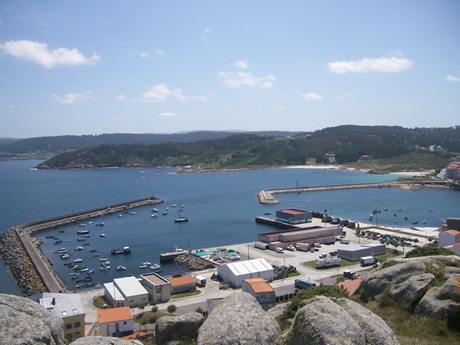
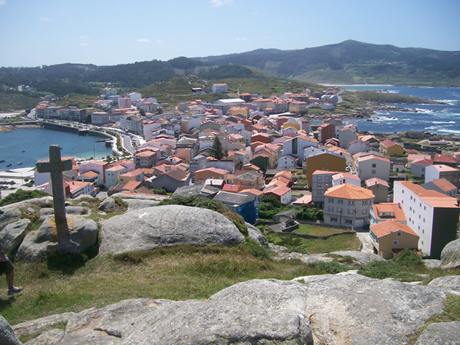 We walked up around the headland to the chapel on the
coast.This is a favourite last point for many of the pilgrims who walk to
Santiago and has had religious significance since before Christian times.The
rocks of the headland at the end of Cape Muxia were considered by the Celtic
people to have magical powers, a belief that was absorbed into the Christian
tradition, they are now said to have healing powers for illnesses related
to the kidneys! However what impressed me most were the waves left over from the
previous day's winds crashing on the rocks.
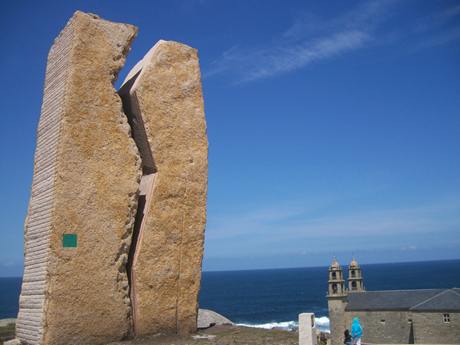 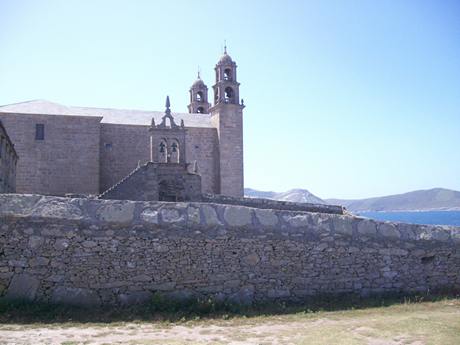 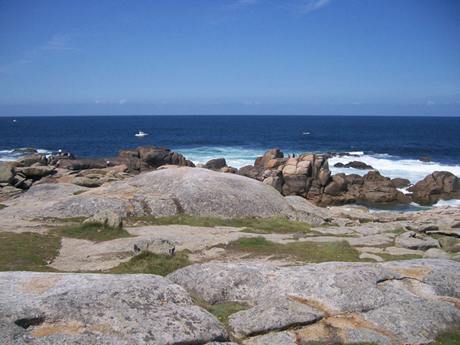 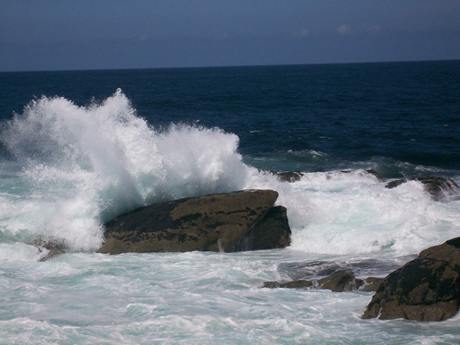
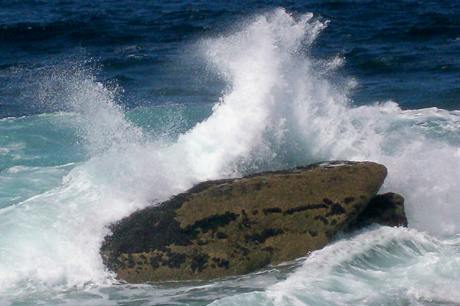 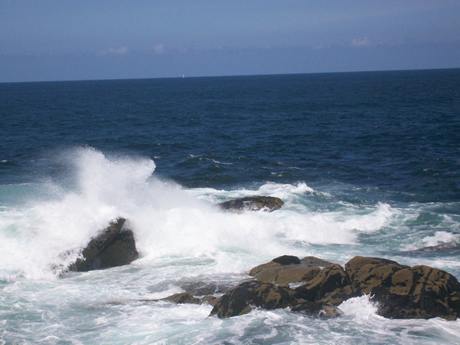
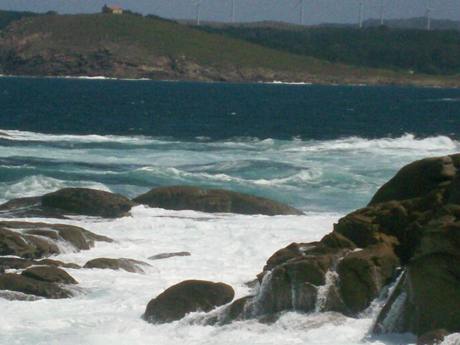 We walked back from the headland along a coastal path. The
land even on the steep hill sides had all been farmed in the past. A few tiny
fields were still in use mostly growing potatoes.The economy was clearly one
based on a crofting way of life for most. However, the town did have some signs
of wealth in the past although too many of the oldest buildings were in a poor
state.
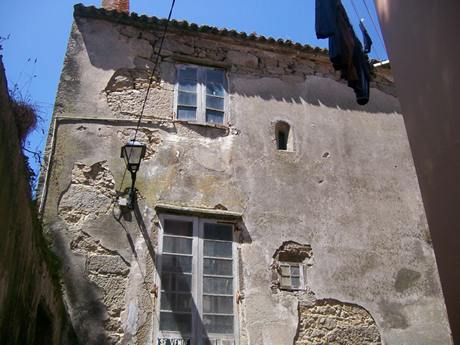
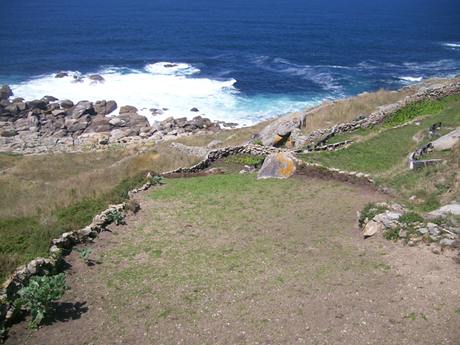 We had an excellent meal in a seaside restaurant and
then returned to the boat for siesta!
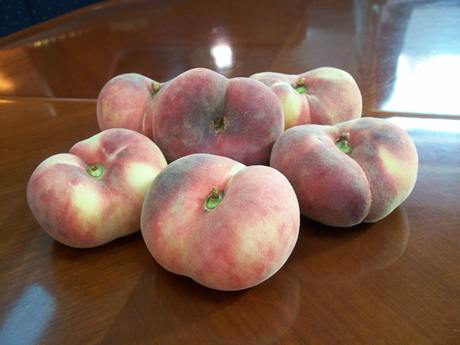 We like the food here a lot; we particularly like
these unusual squashed looking peaches.
|